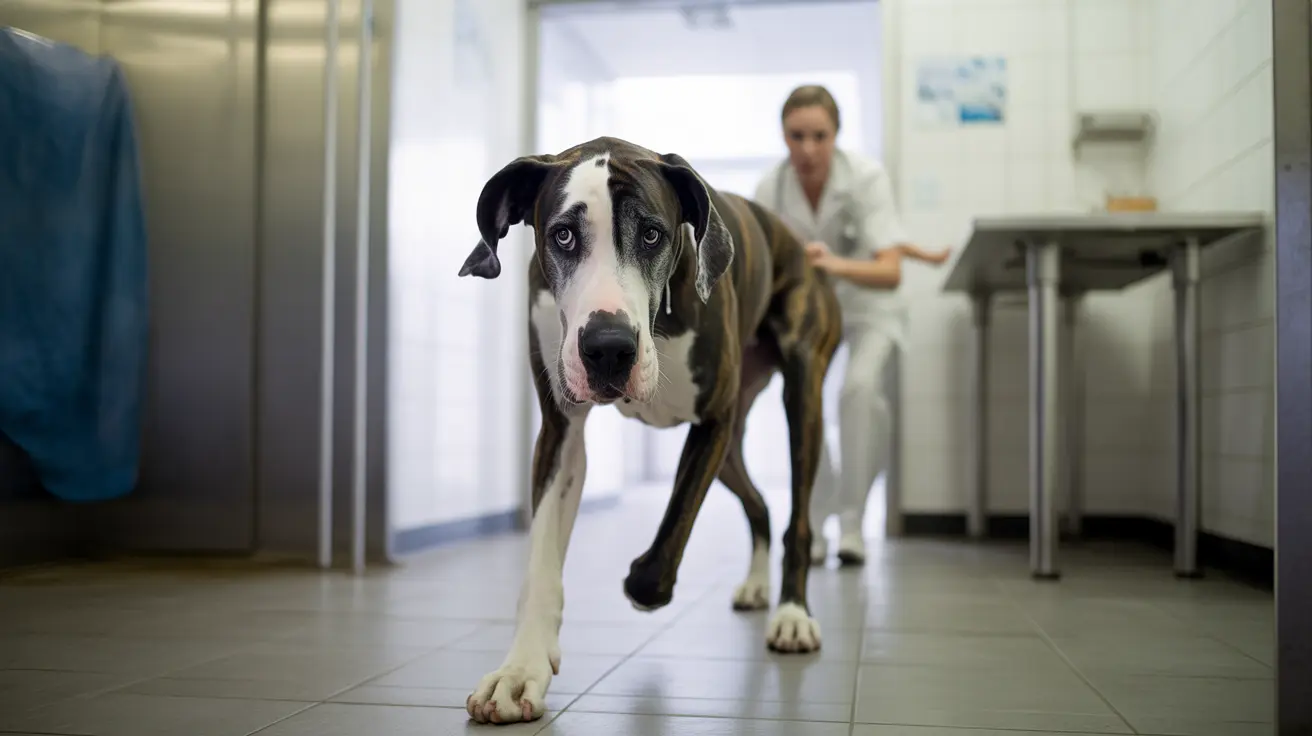When a dog's stomach flips, also known as Gastric Dilatation and Volvulus (GDV), it creates a life-threatening emergency that requires immediate veterinary attention. This serious condition occurs when a dog's stomach fills with gas and rotates on itself, cutting off blood flow and trapping contents inside. Understanding this condition could mean the difference between life and death for your canine companion.
GDV predominantly affects large, deep-chested breeds, but any dog can potentially develop this condition. The progression from initial symptoms to critical shock can happen within hours, making quick recognition and response crucial for survival.
What Causes a Dog's Stomach to Flip?
Several factors can contribute to a dog's stomach flipping, though the exact cause isn't always clear. Risk factors include:
- Eating large meals quickly
- Drinking excessive water before or after meals
- Vigorous exercise following meals
- Genetic predisposition in certain breeds
- Age and anatomical structure
Deep-chested breeds are particularly susceptible due to their anatomy, which allows more room for the stomach to rotate within the abdomen. Stress and anxiety can also play a role in developing GDV.
Recognizing the Signs of a Flipped Stomach
Early detection is crucial for survival. Watch for these warning signs:
- Distended or bloated abdomen
- Unsuccessful attempts to vomit
- Excessive drooling
- Restlessness or pacing
- Rapid breathing or panting
- Signs of pain when touching the belly
If you notice any combination of these symptoms, consider it an emergency and seek immediate veterinary care. The condition can progress rapidly, potentially becoming fatal within hours.
Emergency Treatment for GDV
Treatment for a flipped stomach involves several urgent steps:
- Immediate stabilization with IV fluids
- Decompression of the stomach
- Emergency surgery to untwist the stomach
- Gastropexy procedure to prevent recurrence
The success rate is highest when treatment begins within the first hour of symptoms appearing. Without treatment, GDV is almost always fatal.
Prevention Strategies
While not all cases of GDV can be prevented, several measures can help reduce the risk:
- Feed multiple small meals throughout the day
- Use slow-feeder bowls to prevent rapid eating
- Avoid exercise for an hour after meals
- Consider preventative surgery for high-risk breeds
- Maintain a healthy weight and stress-free environment
Frequently Asked Questions
What are the early signs that my dog's stomach might be flipped or twisted (GDV)?
The earliest signs include a distended abdomen, unsuccessful attempts to vomit, excessive drooling, restlessness, and signs of discomfort. Dogs may also pace, show signs of anxiety, and appear unable to get comfortable.
Which dog breeds are most at risk for gastric dilatation and volvulus (GDV)?
Large, deep-chested breeds are at highest risk, including Great Danes, Saint Bernards, German Shepherds, Standard Poodles, and Weimaraners. Great Danes have the highest lifetime risk at 20-45%.
How is a flipped or twisted stomach in dogs treated and is surgery always required?
Yes, surgery is always required to treat GDV. Treatment involves stabilization with IV fluids, stomach decompression, and emergency surgery to untwist the stomach and perform a gastropexy to prevent recurrence.
What can I do to prevent my dog from developing GDV or a flipped stomach?
Preventive measures include feeding multiple small meals daily, using slow-feeder bowls, avoiding exercise around meal times, and considering preventative gastropexy surgery for high-risk breeds.
How quickly do symptoms of a twisted stomach progress, and when should I seek emergency veterinary care?
Symptoms can progress from mild to life-threatening within 1-2 hours. Seek emergency veterinary care immediately if you notice any signs of GDV, as waiting even a few hours can be fatal.






